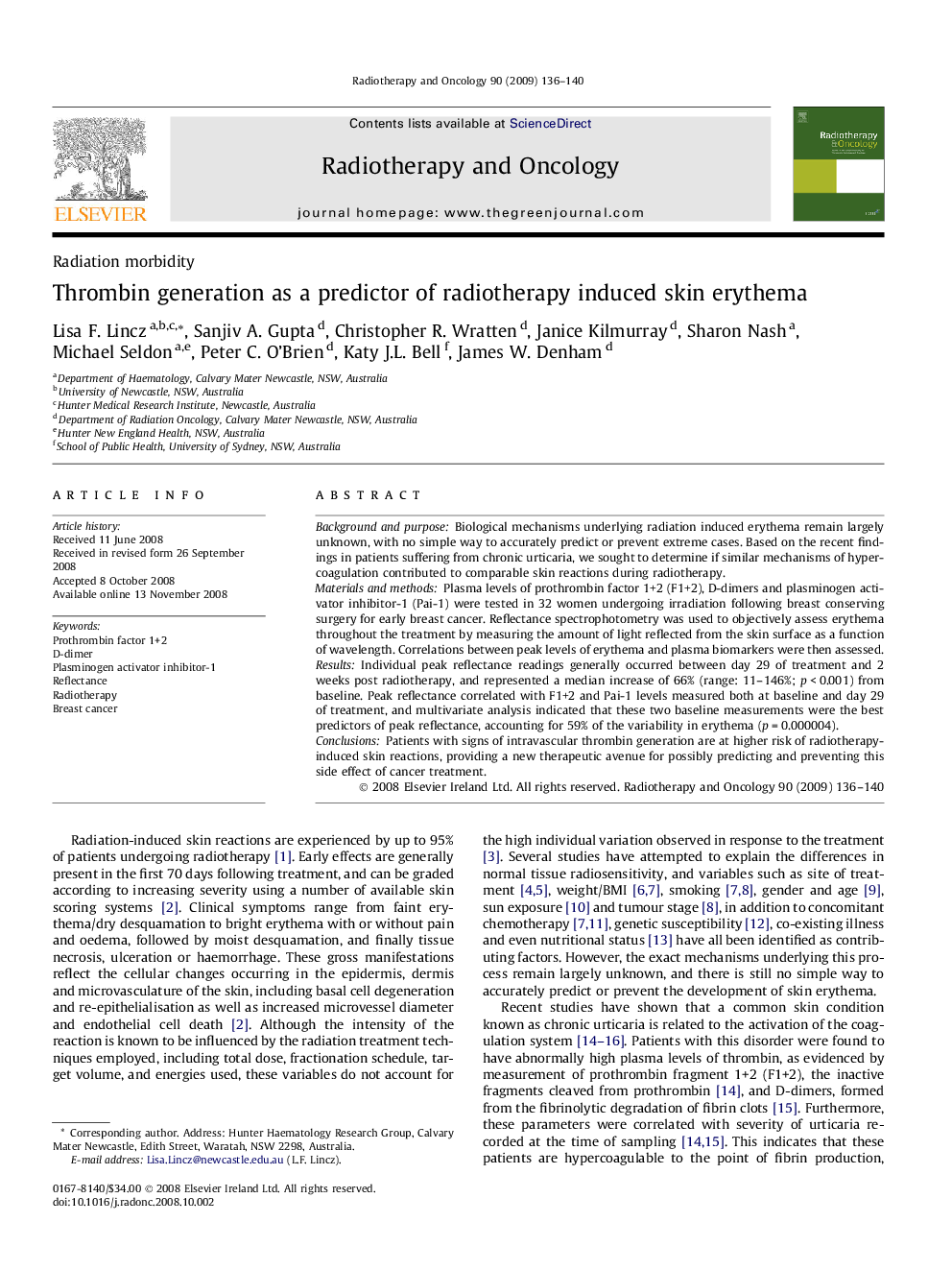| Article ID | Journal | Published Year | Pages | File Type |
|---|---|---|---|---|
| 2160165 | Radiotherapy and Oncology | 2009 | 5 Pages |
Background and purposeBiological mechanisms underlying radiation induced erythema remain largely unknown, with no simple way to accurately predict or prevent extreme cases. Based on the recent findings in patients suffering from chronic urticaria, we sought to determine if similar mechanisms of hypercoagulation contributed to comparable skin reactions during radiotherapy.Materials and methodsPlasma levels of prothrombin factor 1+2 (F1+2), D-dimers and plasminogen activator inhibitor-1 (Pai-1) were tested in 32 women undergoing irradiation following breast conserving surgery for early breast cancer. Reflectance spectrophotometry was used to objectively assess erythema throughout the treatment by measuring the amount of light reflected from the skin surface as a function of wavelength. Correlations between peak levels of erythema and plasma biomarkers were then assessed.ResultsIndividual peak reflectance readings generally occurred between day 29 of treatment and 2 weeks post radiotherapy, and represented a median increase of 66% (range: 11–146%; p < 0.001) from baseline. Peak reflectance correlated with F1+2 and Pai-1 levels measured both at baseline and day 29 of treatment, and multivariate analysis indicated that these two baseline measurements were the best predictors of peak reflectance, accounting for 59% of the variability in erythema (p = 0.000004).ConclusionsPatients with signs of intravascular thrombin generation are at higher risk of radiotherapy-induced skin reactions, providing a new therapeutic avenue for possibly predicting and preventing this side effect of cancer treatment.
